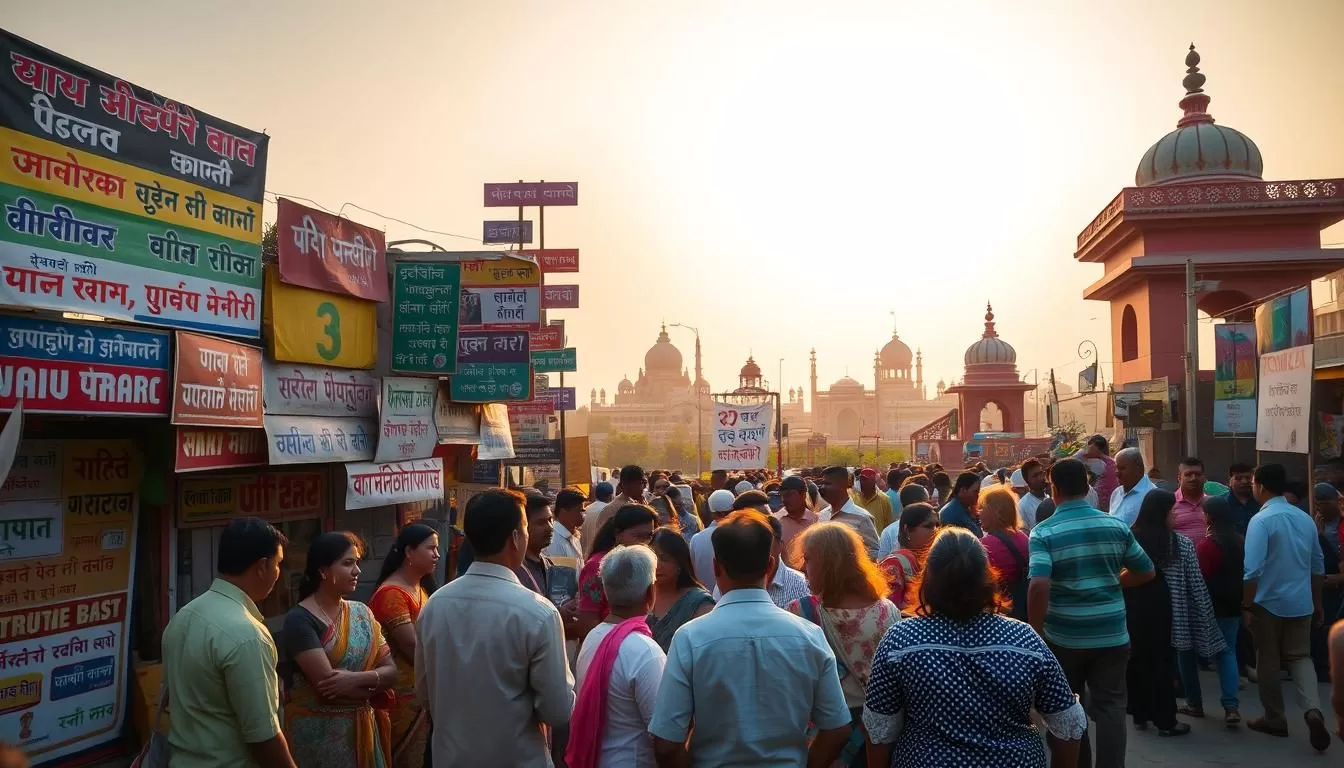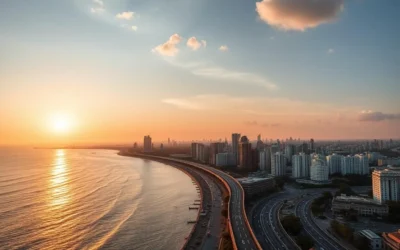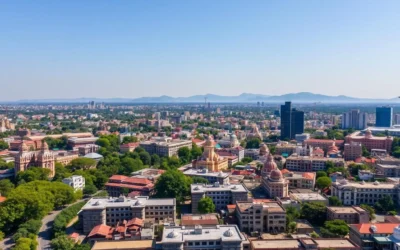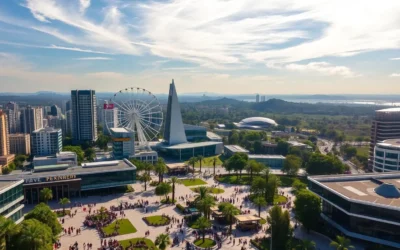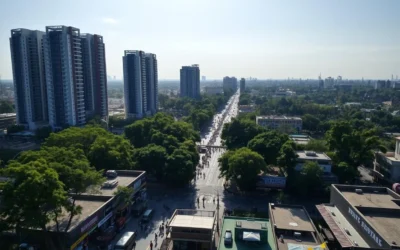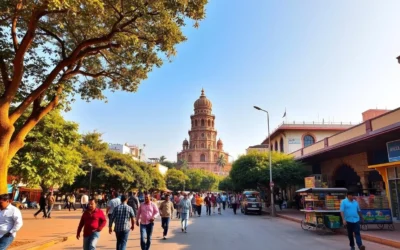✓ Accommodations✓ Flights✓ Rental Cars✓ Tours & Activities
As you explore Maharashtra, one of India‘s most culturally vibrant states, you’ll uncover a rich linguistic diversity that defines the region.
With Marathi as its official language, Maharashtra showcases India’s incredible linguistic heritage. Beyond Marathi, you’ll encounter multiple languages, including Hindi, English, and various regional dialects, reflecting the state’s diverse cultural landscape.
This linguistic diversity not only shapes the cultural identity of Maharashtra but also influences daily life across urban centers and rural communities. As you delve into the world of Indian languages, you’ll gain a deeper appreciation for the state’s literature, arts, and cultural traditions.
The Linguistic Landscape of Maharashtra
As you explore Maharashtra, you’ll discover a rich linguistic landscape shaped by its history and cultural diversity. The state’s linguistic profile is characterized by a dominant official language, Marathi, alongside other widely spoken languages.

Maharashtra’s linguistic diversity is a reflection of its position within India’s broader linguistic tapestry. Understanding this landscape is crucial for appreciating the state’s cultural identity and navigating its administrative and educational systems.
Maharashtra’s Position in India’s Linguistic Diversity
India is known for its incredible linguistic diversity, with 22 languages recognized by the Indian Constitution. Maharashtra, as a part of this diverse landscape, contributes significantly to the country’s cultural richness. The state’s linguistic profile is marked by the prominence of Marathi, which is not only the official language but also a symbol of the state’s cultural heritage.
You’ll find that Marathi plays a vital role in the state’s administrative, educational, and cultural contexts. The language is deeply intertwined with the identity of the people of Maharashtra, reflecting their history, traditions, and values.
Official Language Status and Recognition
Marathi enjoys official status as the primary administrative and educational language of Maharashtra under both state and constitutional provisions. When interacting with government offices, you’ll notice that Marathi is the mandated language for official communications, although English is often used alongside it to facilitate broader understanding and communication.
- The state government actively promotes Marathi through various policies and educational requirements, ensuring its continued prominence.
- Maharashtra’s Language Act requires businesses and public establishments to display information in Marathi alongside other languages, reflecting the state’s commitment to preserving its linguistic heritage.
- The celebration of “Marathi Language Day” on February 27th commemorates the birth of renowned Marathi poet Kusumagraj, highlighting the state’s reverence for its linguistic legacy.
Understanding the official status of Marathi and its practical implementation across urban and rural areas will help you navigate bureaucratic processes and appreciate the state’s efforts to preserve its linguistic heritage.
Marathi: The Official Language of Maharashtra
As you explore Maharashtra, you’ll discover the richness of Marathi, the official language. Marathi is not just a means of communication; it’s a cornerstone of the state’s cultural identity. With a history spanning centuries, Marathi has evolved into a language with diverse dialects and scripts.
Origins and Historical Development
Marathi’s origins date back to the 8th or 9th century, emerging from the Prakrit languages. Over time, it developed distinct features, influenced by various cultural and geographical factors. The language has been shaped by historical events, including the rule of various dynasties and empires. As a result, Marathi has become a unique blend of different linguistic traditions.
Marathi Scripts: Devanagari and Modi
Marathi is written primarily in the Devanagari script, which is also used for other languages like Hindi and Sanskrit. Historically, the Modi script was used, especially for administrative and literary purposes. Although Devanagari is now the dominant script, the Modi script still holds cultural significance. 
Regional Variations and Dialects
Marathi is spoken across various regions in Maharashtra, with notable variations in dialects. You can identify as many as 42 distinct dialects across the state. The standard Marathi used in media and formal settings is based on the dialect spoken in Pune. However, you’ll encounter different dialects like Varhadi, Ahirani, and Konkani Marathi, each with its unique characteristics. Some dialects, like those spoken in rural areas, preserve older forms of the language and include vocabulary related to agricultural practices.
| Dialect | Region | Characteristics |
|---|---|---|
| Varhadi | Vidarbha | Distinctive vocabulary and pronunciation |
| Ahirani | North Maharashtra | Influenced by local tribal languages |
| Konkani Marathi | Konkan coast | Blend of Marathi and Konkani languages |
Understanding these regional variations and dialects can enhance your cultural experience in Maharashtra. As Marathi is primarily spoken in the state, learning about its nuances can help you connect with locals in different regions.
Other Widely Spoken Languages in Maharashtra
As you explore Maharashtra, you’ll discover a rich tapestry of languages beyond the official Marathi. The state’s linguistic diversity is a reflection of its cultural heritage and the various communities that call it home.
Hindi Usage and Influence
Hindi is widely understood and spoken in Maharashtra, particularly in urban areas like Mumbai. With over 528 million speakers in India, Hindi serves as a common language for communication among people from different regions. You might notice that Hindi has a significant influence on local dialects and is often used in media and entertainment.
English as a Business and Educational Language
English is extensively used in Maharashtra’s business and educational sectors, particularly in urban centers. As a widely spoken language in India, with a significant presence in commerce, education, and government, English plays a crucial role in connecting Maharashtra to the global economy. You’ll find that many educational institutions use English as a primary medium of instruction.
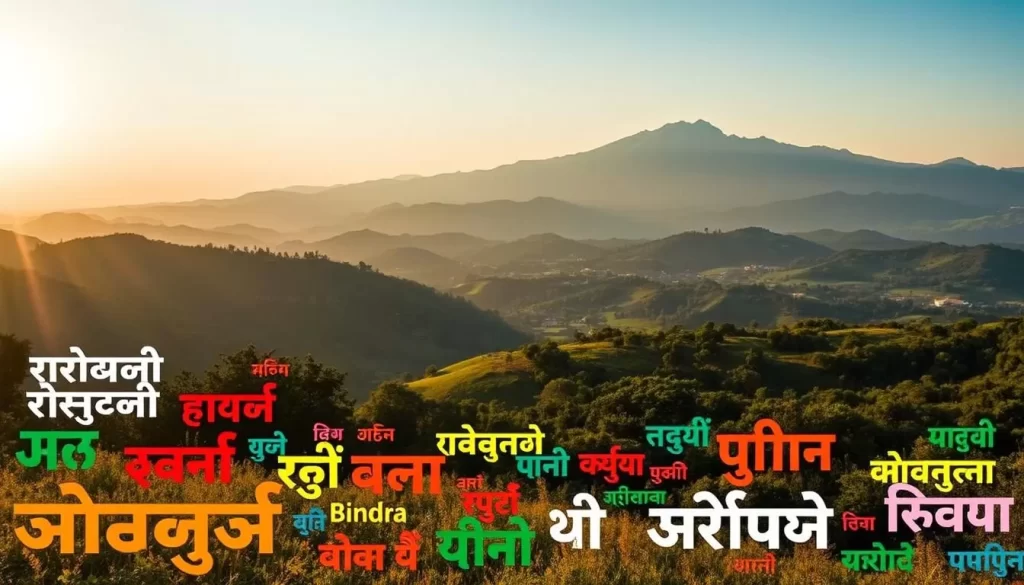
Urdu and Other Significant Languages
Urdu, with its rich poetic tradition, is spoken by a significant number of people in Maharashtra, particularly in cities like Aurangabad and parts of Mumbai. You might also encounter other languages like Gujarati, Kannada, Telugu, and Tamil, spoken by various communities across the state. These languages contribute to the state’s linguistic diversity, with over 50 million Urdu speakers and millions more speaking other languages across India, including in states like Andhra Pradesh, Tamil Nadu, and West Bengal.
The cosmopolitan nature of cities like Mumbai has created linguistic enclaves where you’ll find speakers of numerous languages, including Bengali, Punjabi, and Malayalam. Additionally, tribal languages like Gondi, Bhili, and Warli are spoken by indigenous communities in Maharashtra’s more remote regions, representing an important part of the state’s cultural heritage.
Cultural and Literary Significance of Marathi
In Maharashtra, the Marathi language plays a pivotal role in shaping the cultural and literary fabric of the state. As you explore the depth of Marathi’s influence, you’ll find that it is intricately woven into the daily lives of the people, reflecting their history, traditions, and values.
Marathi Literature and Its Evolution
Marathi literature has a rich history, with its evolution marked by significant milestones. During the British Raj in the 18th century, efforts were made to standardize Marathi, which later became a Scheduled language after India’s independence in 1947. This recognition not only elevated Marathi’s status but also contributed to the linguistic reorganization of states, leading to the formation of Maharashtra. Marathi literature has flourished over the centuries, adapting to changing times while retaining its cultural essence.
The literary landscape of Marathi is diverse, encompassing various genres from poetry to prose. The language has been a medium for expressing the socio-cultural realities of the region, making it a vital part of Maharashtra’s identity.
Language and Cultural Identity in Maharashtra
Language forms the cornerstone of Maharashtrian cultural identity, with Marathi serving as a carrier of shared heritage and values. You’ll experience this firsthand when participating in cultural festivals like Ganesh Chaturthi or attending traditional performances such as Tamasha folk theater, where language and cultural practices are deeply intertwined.
| Cultural Aspect | Role of Marathi | Impact on Identity |
|---|---|---|
| Festivals like Ganesh Chaturthi | Marathi is used in rituals and celebrations | Reinforces community bonding and cultural heritage |
| Traditional Performances (Tamasha) | Marathi is the primary language of expression | Preserves traditional art forms and cultural narratives |
| Educational Policies | Marathi is a mandatory subject in schools | Ensures the continuation of Marathi language and culture among future generations |
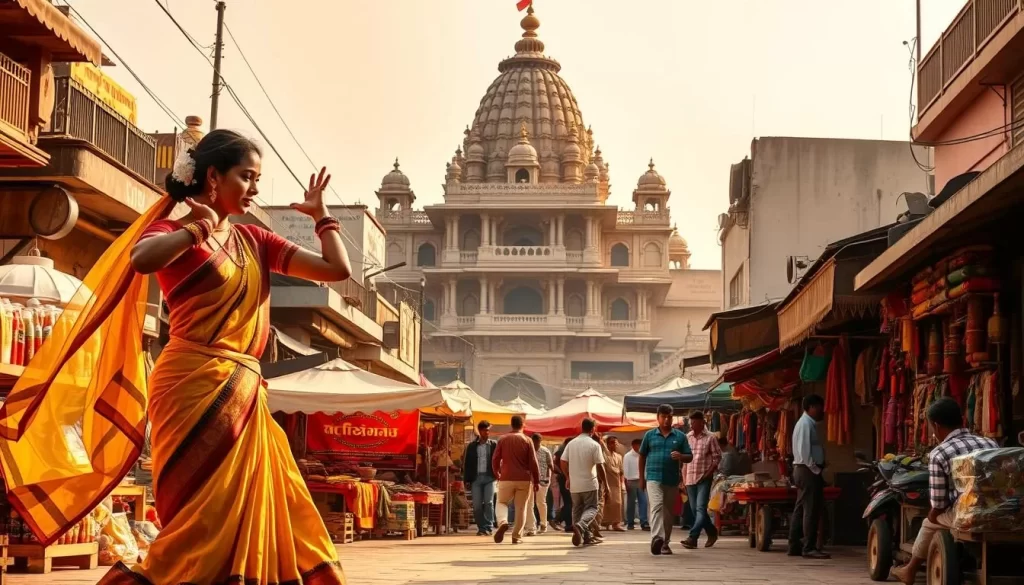
The significance of Marathi in Maharashtra is further underscored by its role in the Samyukta Maharashtra movement, which led to the creation of the state in 1960. Today, Marathi continues to be a vital part of the state’s identity, with ongoing debates about language preservation reflecting its importance to the people.
Conclusion: Navigating Maharashtra’s Multilingual Environment
Maharashtra’s diverse linguistic landscape is a reflection of its position as a cultural and economic crossroads. As you explore the state, you’ll discover that its multilingual character isn’t just a practical reality but a source of cultural richness that has shaped its unique identity within India.
The state’s linguistic diversity, with Marathi as the official language, alongside Hindi, English, and other languages, creates a complex yet fascinating environment. Successfully navigating this landscape requires understanding the complementary roles these languages play in different contexts.
You’ll find that language choice in Maharashtra often signals social relationships, with code-switching being a sophisticated communication strategy. The ongoing evolution of Maharashtra’s language landscape demonstrates how languages adapt to changing social needs while maintaining connections to cultural heritage.
Whether you’re visiting briefly or planning a longer stay, appreciating the nuances of Maharashtra’s language situation enhances your experience and deepens your understanding of this fascinating region. The linguistic complexity represents both challenges and opportunities for Maharashtra’s future development, balancing regional identity with national integration and global connectivity.
As you engage with the local culture, learning basic Marathi phrases demonstrates respect, though you’ll discover that language accommodation is common in tourist areas and business settings. This multilingual environment reflects broader patterns in India, where practical communication often trumps linguistic purism in daily interactions.
The above is subject to change.
Check back often to TRAVEL.COM for the latest travel tips and deals.
